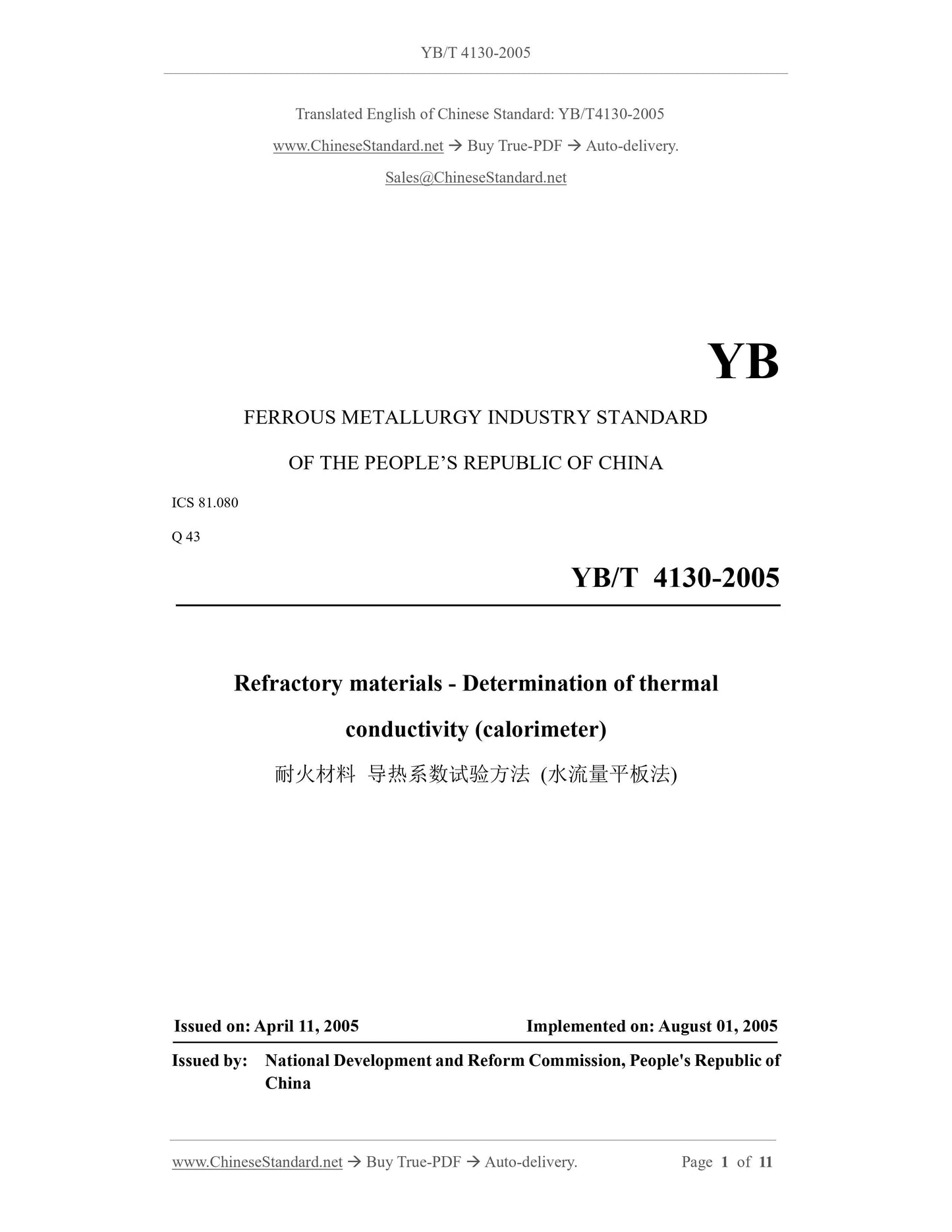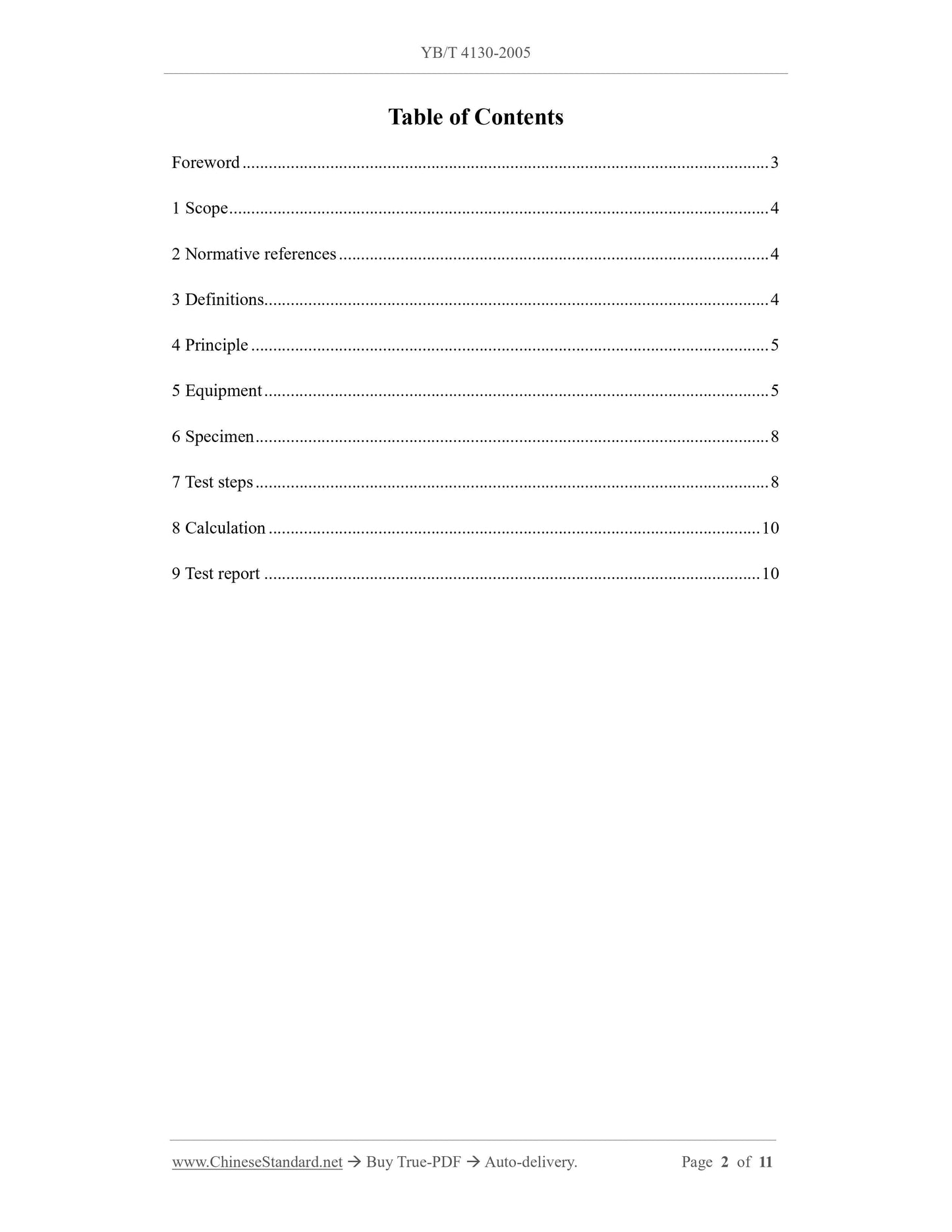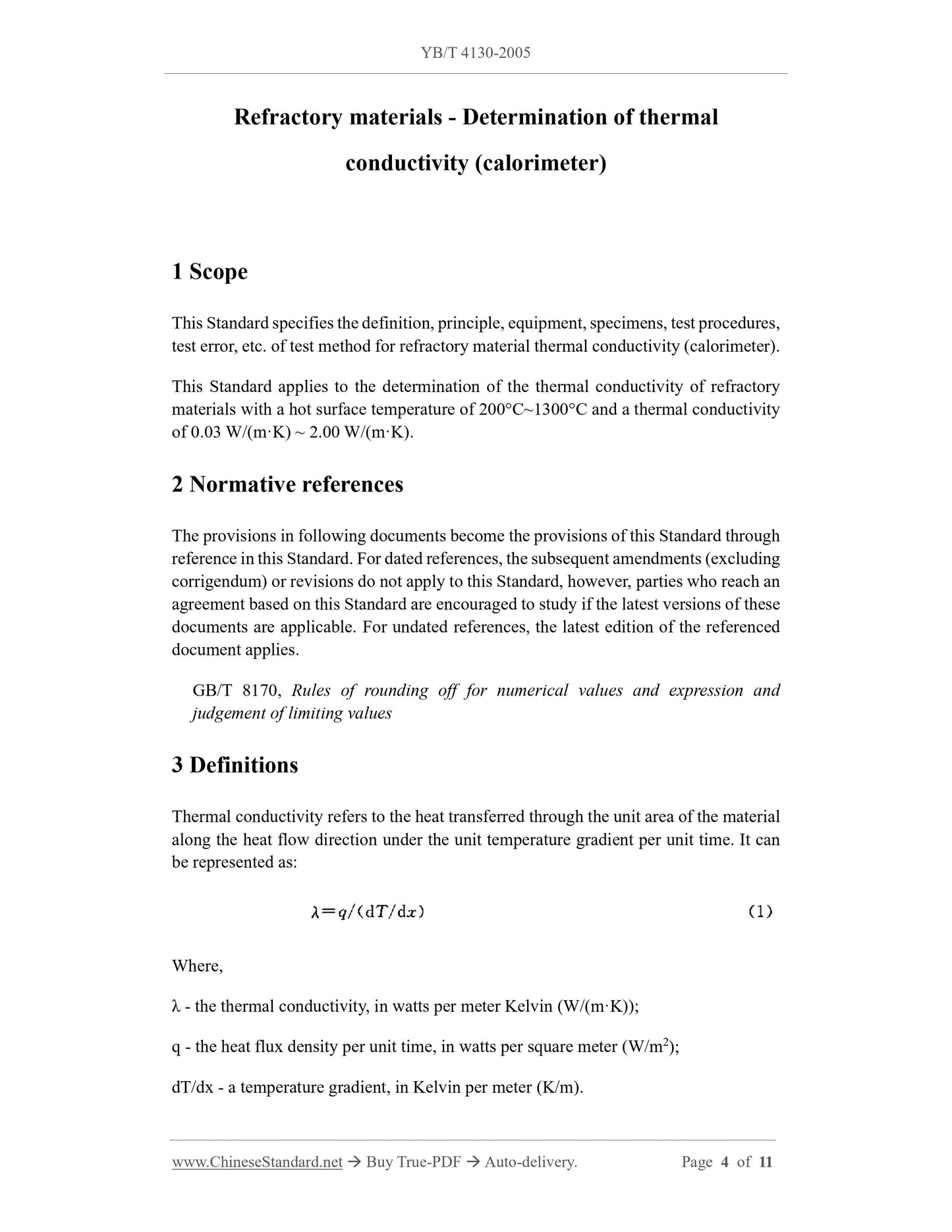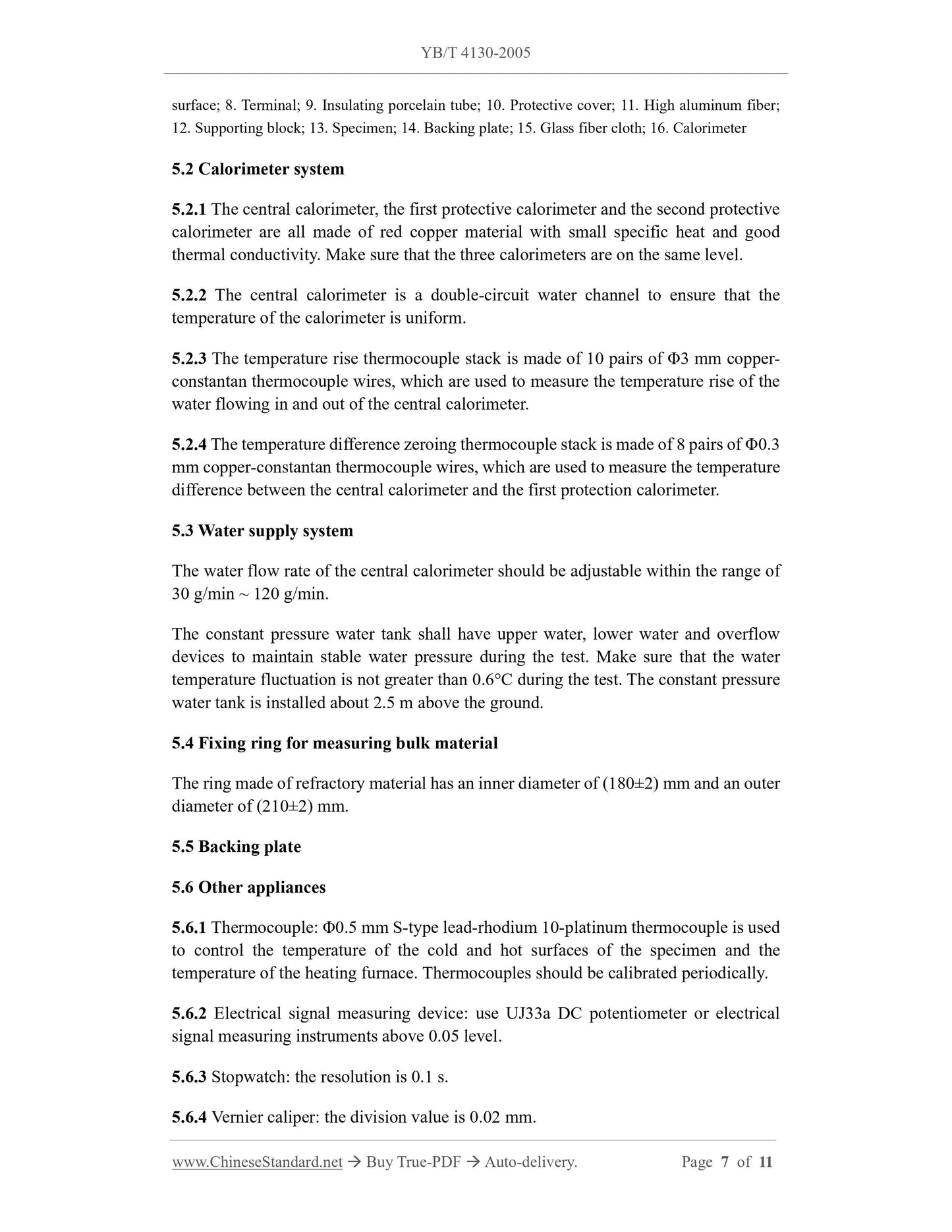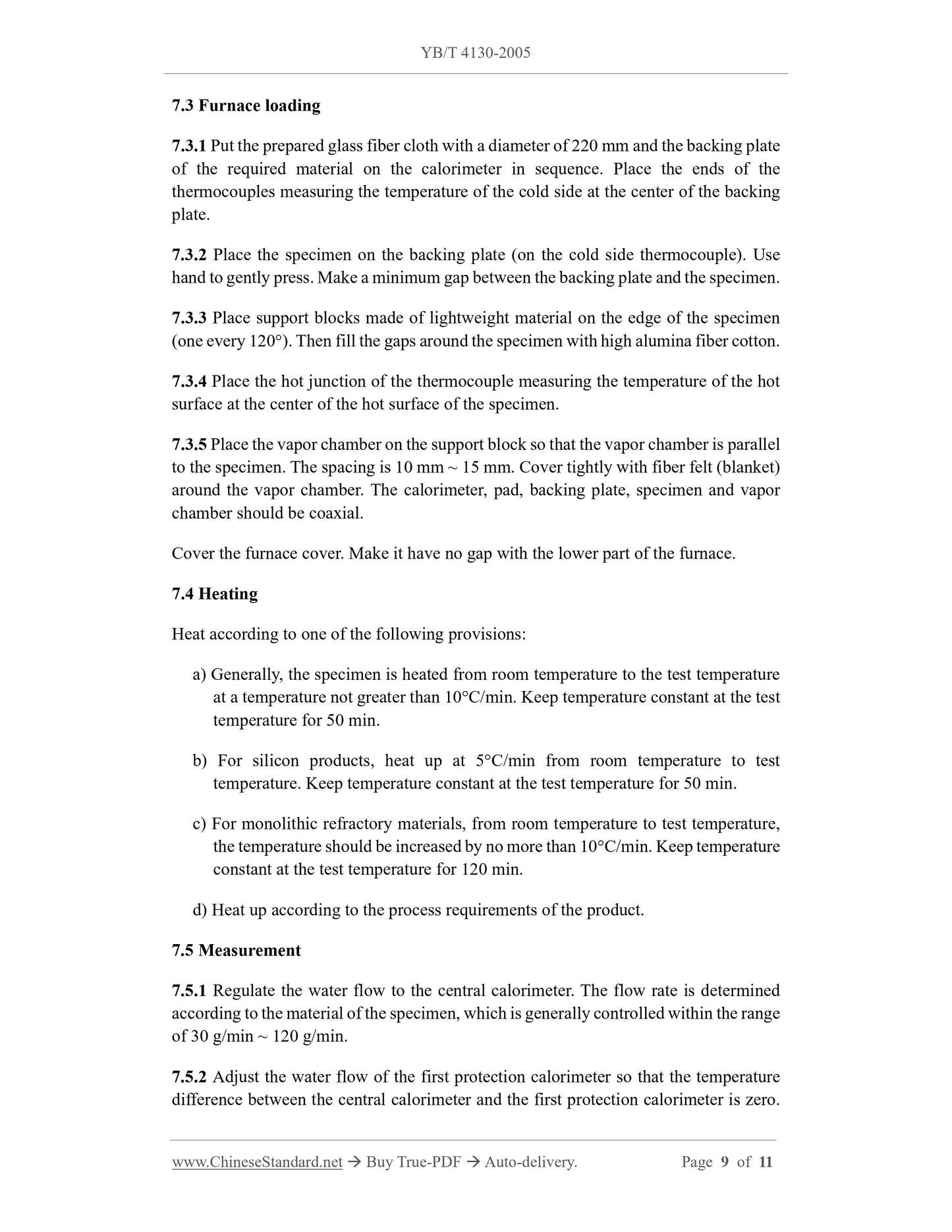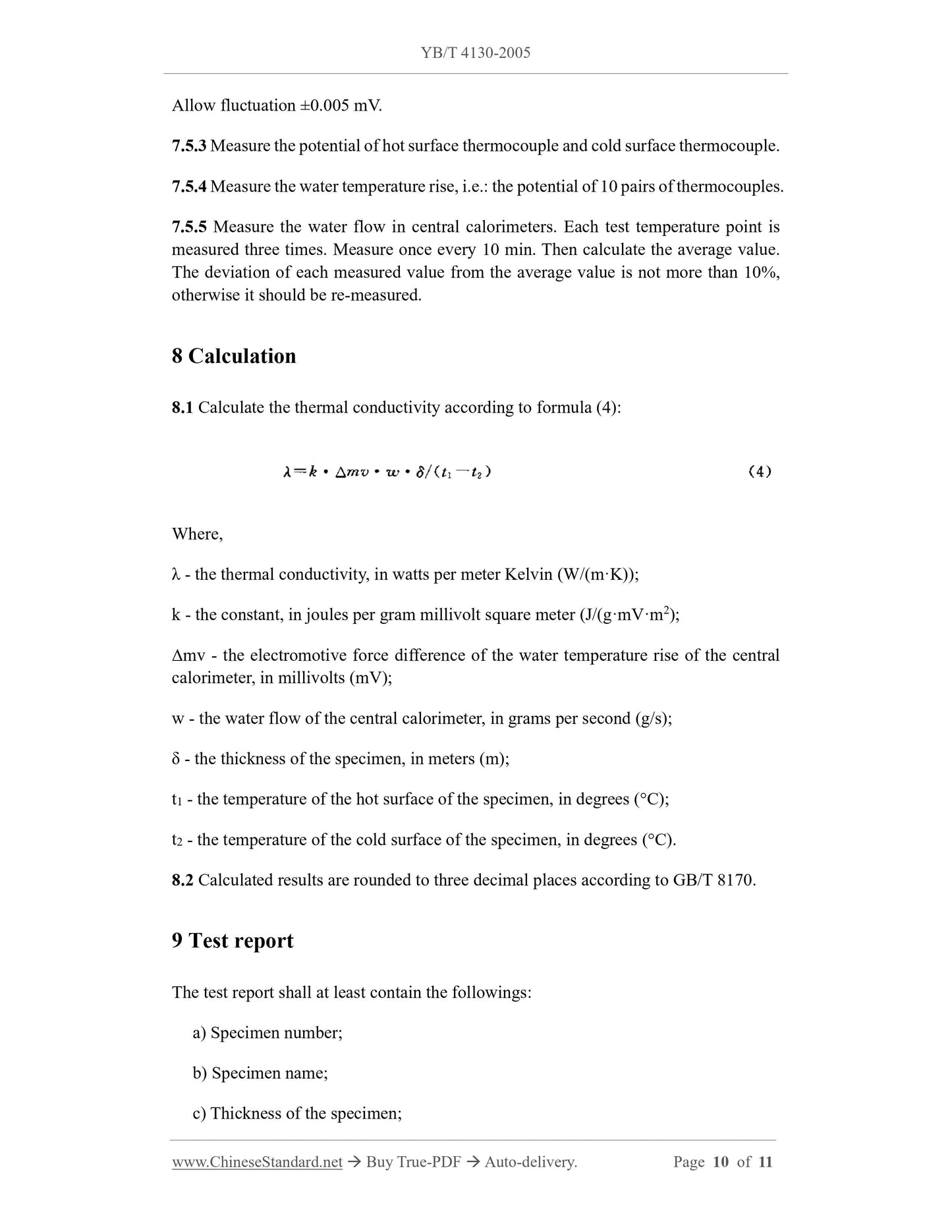1
/
of
6
www.ChineseStandard.us -- Field Test Asia Pte. Ltd.
YB/T 4130-2005 English PDF (YB/T4130-2005)
YB/T 4130-2005 English PDF (YB/T4130-2005)
Regular price
$85.00
Regular price
Sale price
$85.00
Unit price
/
per
Shipping calculated at checkout.
Couldn't load pickup availability
YB/T 4130-2005: Refractory materials - Determination of thermal conductivity (calorimeter)
Delivery: 9 seconds. Download (and Email) true-PDF + Invoice.Get Quotation: Click YB/T 4130-2005 (Self-service in 1-minute)
Newer / historical versions: YB/T 4130-2005
Preview True-PDF
Scope
This Standard specifies the definition, principle, equipment, specimens, test procedures,test error, etc. of test method for refractory material thermal conductivity (calorimeter).
This Standard applies to the determination of the thermal conductivity of refractory
materials with a hot surface temperature of 200°C~1300°C and a thermal conductivity
of 0.03 W/(m·K) ~ 2.00 W/(m·K).
Basic Data
| Standard ID | YB/T 4130-2005 (YB/T4130-2005) |
| Description (Translated English) | Refractory materials. Determination of thermal conductivity(calorimeter) |
| Sector / Industry | Ferrous Metallurgy Industry Standard (Recommended) |
| Classification of Chinese Standard | Q43 |
| Classification of International Standard | 81.080 |
| Word Count Estimation | 7,753 |
| Date of Issue | 2005-04-11 |
| Date of Implementation | 2005-08-01 |
| Quoted Standard | GB/T 8170 |
| Regulation (derived from) | National Development and Reform Commission Notice No. 15 of 2005 |
| Summary | This standard specifies: System and software efficiency testing methods. This approach is in GB/T 29835. 1-index system and GB/T 29835. 2-metric method based on, efficiency indicator system gives each efficiency indicators Test methods. The standard index system for efficiency the application method is extended, proposed index system for testing the efficiency of the application framework, make efficiency indicator system as possible to meet a variety of different test objectives and test requirements. This standard applies to: System and software efficiency evaluation. |
Share
